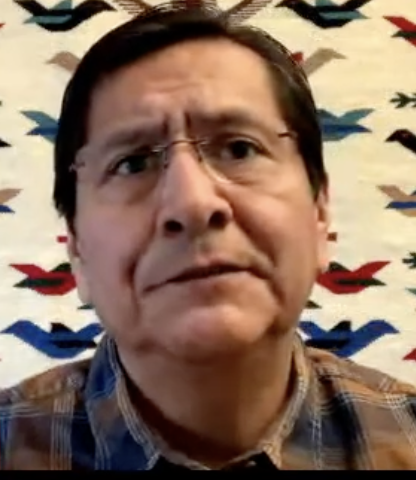For Everyone’s Health, Dietary Guidelines for Americans Should Better Reflect Native American Traditions

Guest Opinion. Forcing Indigenous children into boarding schools was a destructive policy implemented by the federal government that had long-term consequences causing multigenerational trauma. But it was not the only policy that wreaked havoc on Native Americans. Over decades, the government also forcibly changed the traditional dietary practices of Indigenous people, particularly the Three Sisters—beans, corn, and squash—to one that was unrecognizable and unhealthful. This injustice has contributed to the higher rates of obesity, diabetes, liver disease, and other ailments facing Native Americans today.
Right now, the government is uniquely situated to help rectify this historic injustice. Last week, I shared my concern that government programs continue to harm the health of our people in my testimony to the Dietary Guidelines Advisory Committee. This committee is responsible for creating the 2025-2030 Dietary Guidelines for Americans. They should act now to ensure that their recommendations are equitable and restorative for all Americans, Indigenous people included. Specifically, the forthcoming guidelines should delete dairy promotion, avoid equating protein with meat, and increase emphasis on plant-based foods.
I am particularly hopeful about this committee because, for the first time, a Native American is part of the committee, Dr. Valarie Blue Bird Jernigan.
Old-fashioned and, frankly, prejudiced guidelines of the past have inappropriately promoted dairy products that a substantial number of Americans cannot digest. Lactose intolerance is not a disorder; it is a trait like hair or eye color. Eighty percent of Native Americans and African Americans and 90% of Asian Americans cannot digest dairy.
Milk, cheese, and other dairy products were never part of our tradition. Dairying is a European custom, and today, the Dietary Guidelines recommendations still push us to consume milk. Meat was never central to the Navajo diet. Traditionally, our foods were mostly plant-based.
Historically, the Navajo Nation lived off the land. We farmed and were stewards of the land. Our staple foods were corn, beans, and squash—the Three Sisters. We were self-reliant. However, with the westward expansion, the federal government started to interfere with our self-sufficiency. Navajos were removed from their land and were held in captivity. In the process, our people were introduced to government rations that did not reflect our traditions.
Corn, beans, and squash provide protein, calcium, and other nutrients, but are treated as second-class foods in the Dietary Guidelines, which keeps an inappropriate emphasis on meat and dairy products. Beans and legumes are rich in protein and minerals, as well as fiber and other healthful nutrients, with essentially no saturated fat or cholesterol.
These foods are so nutritious, in fact, that they have the ability to reverse conditions like overweight and obesity, diabetes, and heart disease. The Adventist Health Study showed that vegetarian diets were associated with a substantial and independent reduction in diabetes incidence. In observational studies, plant-based diets are associated with healthier body weights, compared with diets including meat and/or dairy products. Vegan diets improve risk factors for cardiometabolic diseases—that is, common and preventable conditions including heart attack, diabetes, and stroke—in patients who have unhealthy fat levels in the blood (dyslipidemia), according to a study published in Frontiers in Nutrition.
Like other Americans, Native Americans do not need to consume cow’s milk since there are so many other foods and beverages that can provide the calcium, protein, vitamins, and minerals that are needed for growth and energy. The 2025-2030 Dietary Guidelines should emphasize the plant-based foods that traditionally kept Indigenous people healthy and that would benefit all Americans.
Jonathan Nez was president of the Navajo Nation from 2019 to 2023 and vice president from 2015 to 2018. He was educated at Northern Arizona University and Northland Pioneer College.
